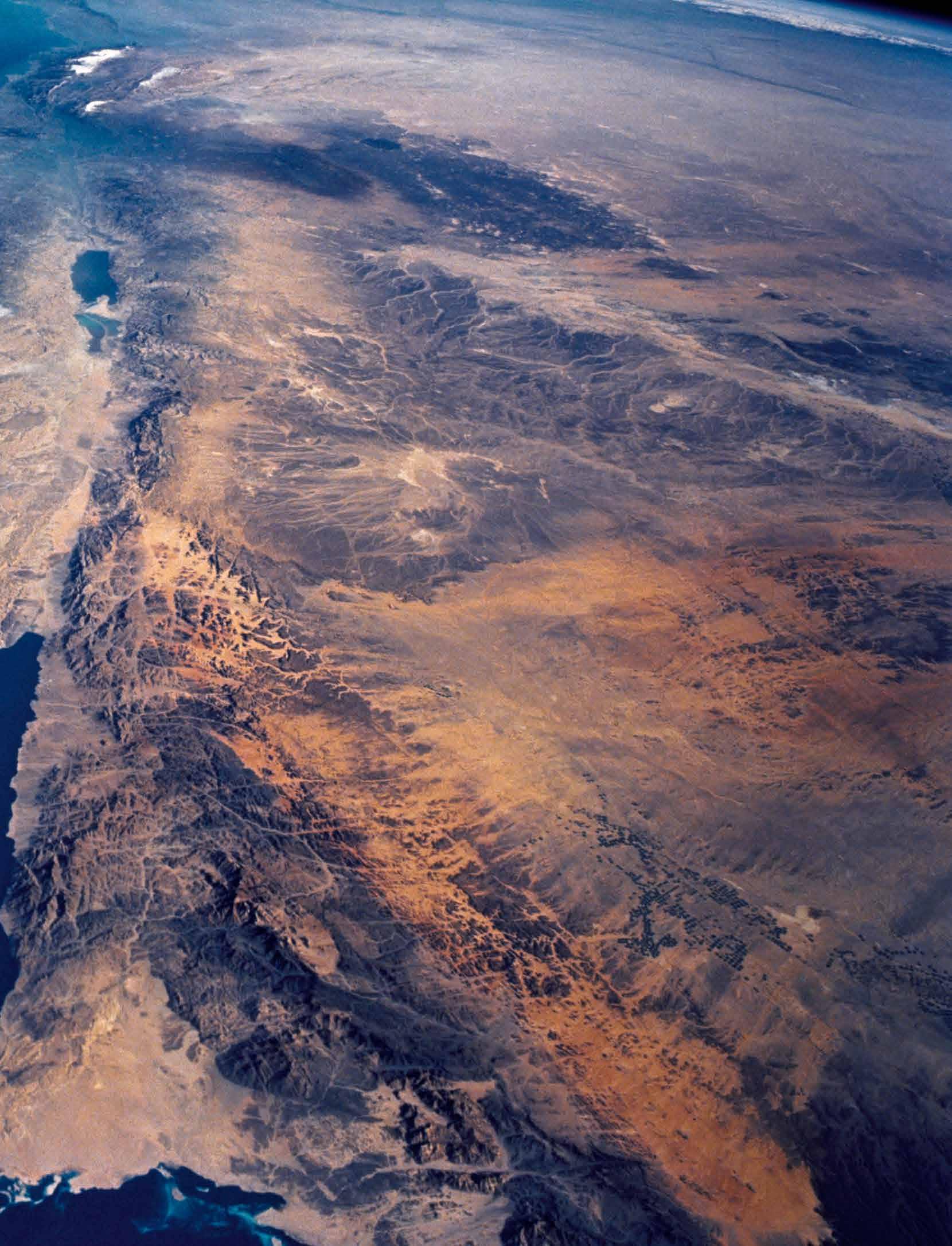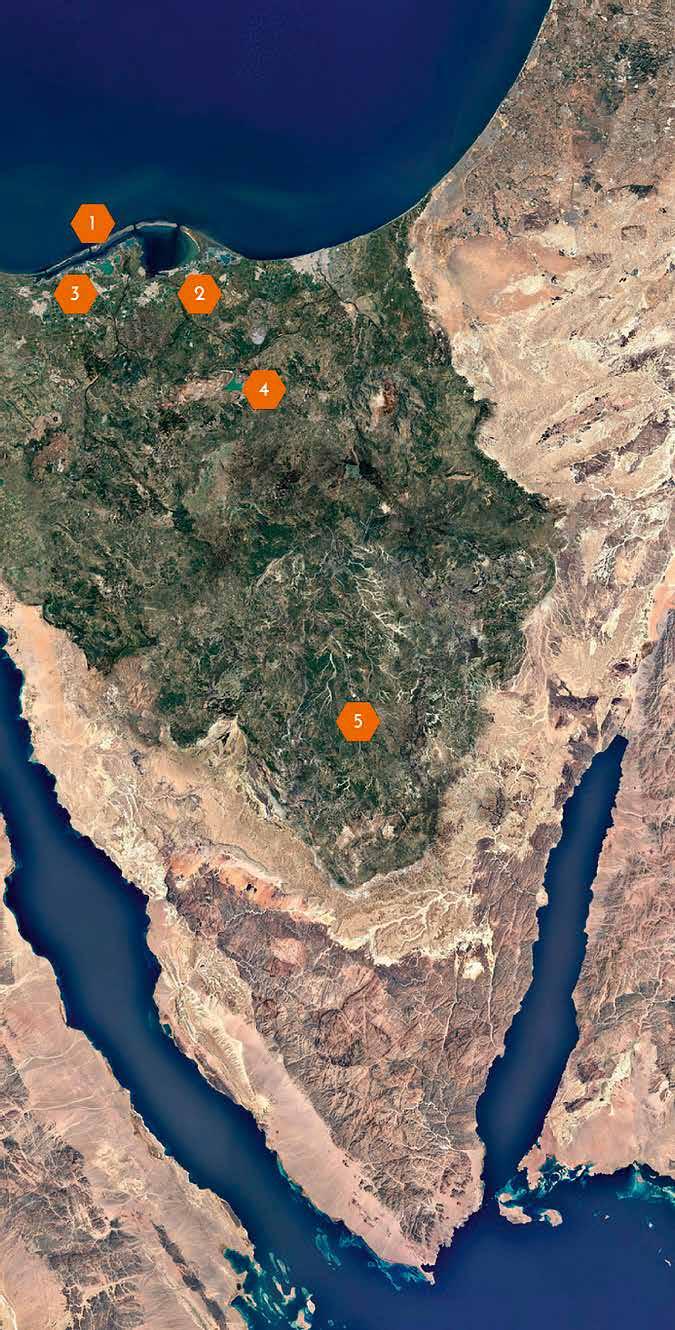
3 minute read
5 steps to transformation
The Sinai project comprises of restoring interconnected areas. The specified steps to accomplish this include:
1
Dredging the lake inlets
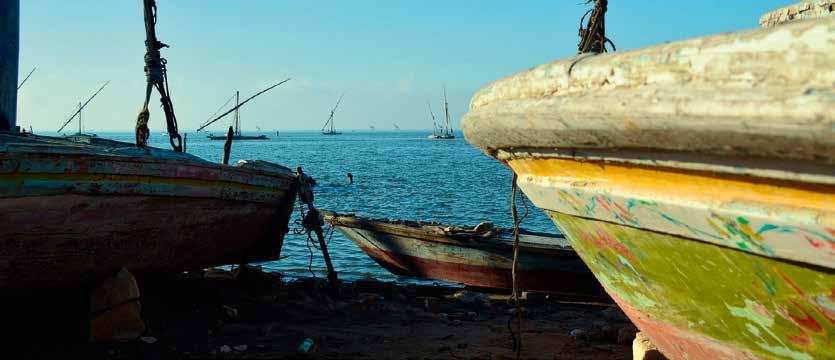
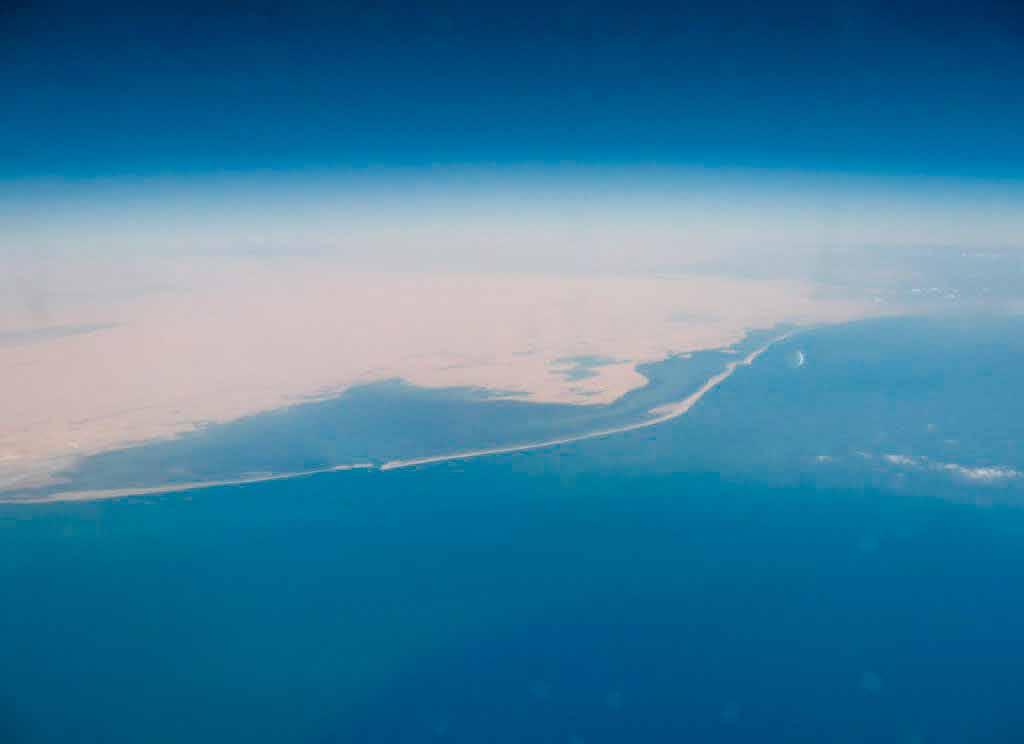
The lagoon, Lake Bardawil on the northern coast of the Sinai, connects to the Mediterranean Sea by two inlets that have a minimal amount of seawater exchange due to sedimentation. It is only 1.5 metres deep (it was once between 20-40 metres deep). Salt levels are extremely high as there is little freshwater and there is high evaporation associated with its shallowness. The fish population has been severely impacted, as has the fishing industry for the region. Restoration of a marine ecosystem and fish population is planned by deepening the inlets and increasing the water exchange with the sea. The dredging could help restore the lake to its former glory, with more tidal activity. In combination with sustainable fishing practices the lake could, over time not only rebuild the marine habitat for many species but also the fishing industry in the area. 3
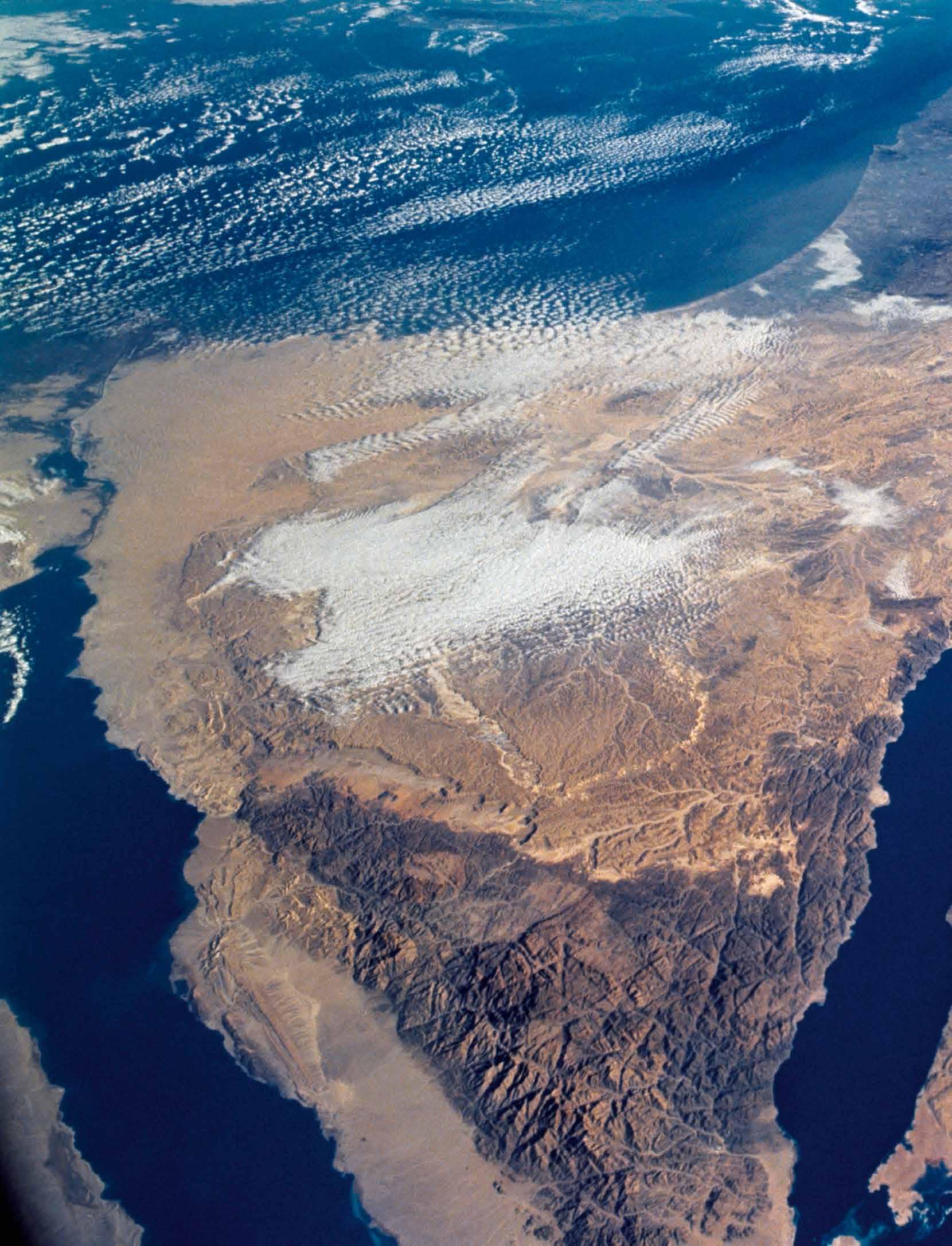
Recycling sediment from dredging
2
Developing the wetlands
With improvements in the lake and the marine ecosystem, the next step is restoring the surrounding wetlands, making it a more attractive stopover for migrating birds. The increased capacity of the lake will have a knock-on effect of rehydrating the lowlands, and make planting of salt-tolerant vegetation possible.
Dredging the inlets as described in the initial step, will mean marine sediments will be available in quantities including sand, silts, clay, peat and sabkhas which can be put to good use. They can be used for fertile soils when regreening, and for structural components such as dams and terraces and coastal reinforcement. One area of research is looking into the growth potential of Lake Bardawil sediments and the potential to desalinate the soils.
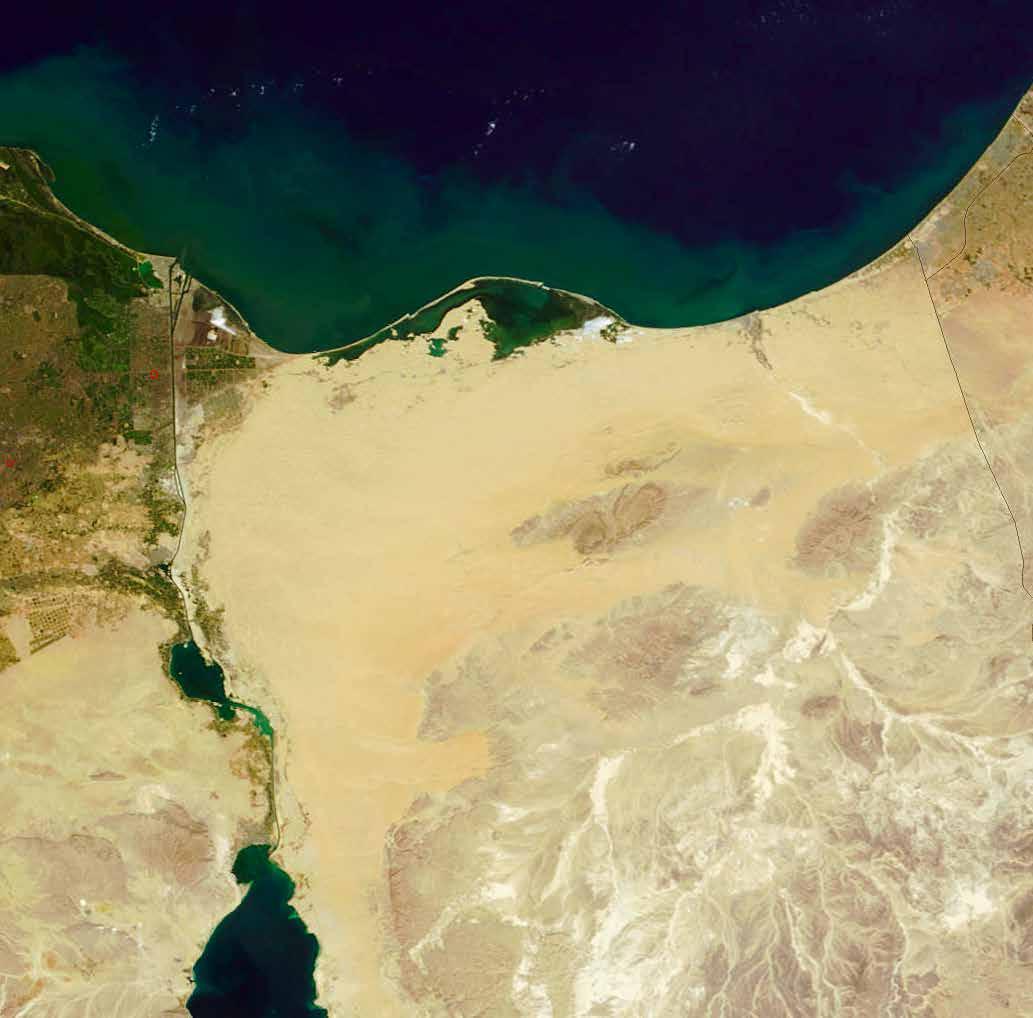
Regreening the desert Step
5
Restoring the watershed
There is a proposed focus on the water cycle of the northern watershed between Lake Bardawil and Gebel Katharina. Water harvesting and growing vegetation will lower temperatures and improve the local climate. There will be regreening in strategically selected locations. The regreening will owe a lot to enhancing evaporation, which although sounds like losing water, it is expected to lead to more water availability, lower temperatures, increased condensation, and improved moisture transport.
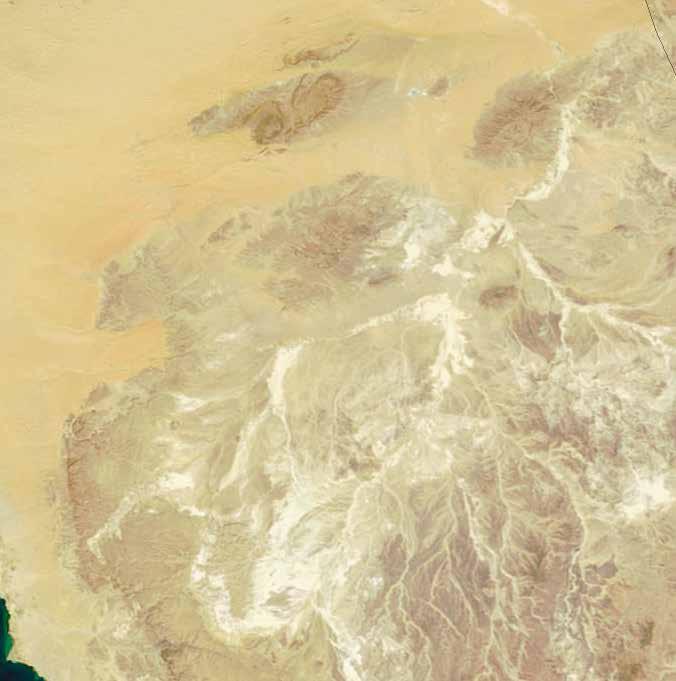
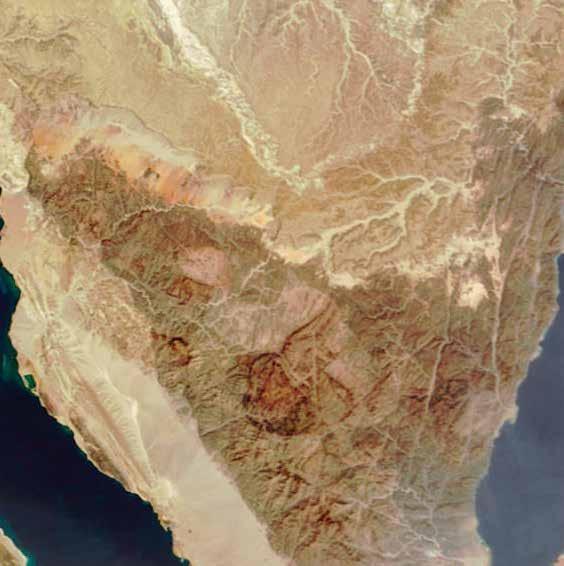
There is some evidence that thousands of years ago the Sinai was a green environment – ancient cave paintings depict trees and plants for example, which fuels the ambition that the landscape can, with the right science, once again sustain greenery. The end game on a local level is to increase food, fresh water, jobs, peace and sustainability for the local population but the implications for all of us, are that such large-scale greening projects hold the power to become the solution to the biggest challenge Mankind has faced to date, regaining stability of our climate.
Access to water is key for regreening. Fog nets will be used at high elevation to harvest fresh water from the air. Hills to the south of Bardawil Lake are 700 metres above sea level and suited for the fog nets. Storing water will mean the construction of dykes and dams with use of the clay-like material from the lake. This will help mitigate flash floods which impact the city of El Arish. Growing vegetation will stimulate industry, help alleviate poverty and increase much needed resources for the local population. A solar driven, natural technology that can be implemented is something called eco machines. An eco machine, in essence, is water flowing from one barrel to another where each barrel has its own ecosystem of algae, plants fungi, worms, insects, fish etc. As the water flows through each of these ponds it becomes cleaner and cleaner. They can clean waste or grow food, depending on the design. For the Sinai project, eco machines would be used to grow plants and produce fresh water. Developed in what amounts to a greenhouse, salt water would feed the machine and fresh water would condense within, that can irrigate plants. Eventually the plants and soil in the greenhouse mature and become self-sustaining. The green house can then be taken away. The premise would be nurturing hundreds of these miniature ecologies. Sediment from Lake Bardawil can be pumped 50km inland and used to feed the network of eco machines. The salt in the sediment initially preserves the nutrients, which is a bonus.
